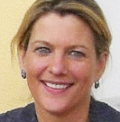 A study published in The Lancet shows how a new media monitoring tool can help to pick up collapses in public confidence in immunisation that may lead to disease outbreaks. But are we doing enough with the information we have on at-risk groups?
A study published in The Lancet shows how a new media monitoring tool can help to pick up collapses in public confidence in immunisation that may lead to disease outbreaks. But are we doing enough with the information we have on at-risk groups?
The research by Heidi Larson’s group at the London School of Hygiene and Tropical Medicine shows that real-time surveillance of vaccine concerns could help focus immunisation campaigns on locations or age groups likely to be at increased risk.
This could potentially mean directing resources to engage with public concerns in areas where trust is seen to be waning, based on sentiments expressed in newspapers and blogs.
Read our interview with Dr Larson
In an accompanying commentary, Nathasha Crowcroft and Kwame McKenzie, experts in public health and psychiatry respectively from Toronto, Canada, say the system could be used to “inoculate communities against vaccine scare stories”.
Perhaps the key question is how public health authorities would use the information produced by a tool like this. Even without real-time social media monitoring, a lot is known about groups at particularly high risk.
Take measles for example. We know some groups shun vaccinations: nomadic populations, anthroposophic communities, sub-groups of the population keen on homeopathy and sceptical of science. Is enough effort made today to engage with these communities?
Consider the measles outbreak in Wales. It was known for years that there was a large group of young adolescents in the population which had not had the two doses of the MMR vaccine recommended by public health experts.
This age group had missed out on immunisation in the aftermath of the public outcry that followed the publication of a now wholly-discredited article by Andrew Wakefield which incorrectly linked the vaccine with developmental disorders.
Vaccination rates for young children in the UK have been steadily recovering but teenagers remained unprotected.
Once the epidemic in Wales began, authorities were quick to launch catch-up programmes targeting areas and age groups known to be vulnerable. Could this catch-up programme have been rolled out before the disease spread?
In some ways, the more detailed information that can be made available, the better. But maybe we should work on doing more with it; taking to heart the Prevention is better than Cure mantra we preach.
What do you think?




